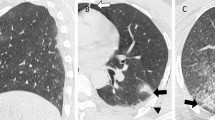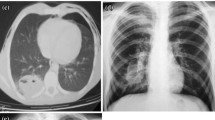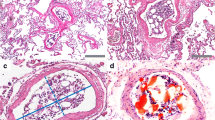Abstract
Introduction
A pulmonary contusion is an entity defined as alveolar haemorrhage and pulmonary parenchymal destruction after blunt chest trauma. According to the literature, most pulmonary contusions can only be seen on a chest CT. The aim of this study was to evaluate the patients with pulmonary contusions, as well as their management, considering diagnostic and therapeutic options related to their outcomes, since we assumed, based on everyday clinical practice, that an ‘overdiagnosing’ and ‘overtreatment’ attitude towards this injury could be present.
Patients and methods
The research was a retrospective study including 5042 patients admitted to the Department of Traumatology in the Clinical Hospital Centre Osijek, during a 3-year period. The medical data of the patients who suffered pulmonary contusion were evaluated considering significant characteristics, known risk factors, procedures undergone, and outcomes.
Results
During the 3-year period, 2% of all the admitted patients were diagnosed with a pulmonary contusion. In 54% of the cases, the patient suffered polytraumatic injuries. The pulmonary contusion was an isolated injury in 7% of the patients. In 31% of the cases, there was no liquidothorax or pneumothorax (isolated pulmonary contusion). In 89% of the patients the pulmonary contusion was diagnosed using a CT scan. In 68% of the patients there were no interventions regarding the thorax; thoracocentesis was performed in 25% of the cases, and pleural punction in 14% of the cases. 25% of the patients developed respiratory insufficiency and 16% required mechanical ventilation. Regarding isolated pulmonary contusions, respiratory insufficiency was present in 8% of the cases.
Conclusions
We suggest that a pulmonary contusion seen on CT only has limited clinical significance and that the use of CT scans in diagnosing and follow-up of these patients should be re-evaluated. Further prospective and randomised studies should be conducted and the patients should be clinically evaluated, with the administration of supportive and antibiotic therapy, maintaining the fluid balance, the administration of diuretics, supportive oxygen therapy, pulmonary toilet, and physical therapy.
Similar content being viewed by others
References
Cohn SM, DuBose JJ. Pulmonary contusion: an update on recent advances in clinical management. World J Surg. 2010;34(8):1959–70.
Ganie FA, Lone H, Lone GN, Wani ML, Singh S, Dar AM, et al. Lung contusion: a clinico-pathological entity with unpredictable clinical course. Bull Emerg Trauma. 2013;1(1):7–16.
Rodriguez RM, Friedman B, Langdorf MI, Baumann BM, Nishijima DK, Hendey GW, et al. Pulmonary contusion in the pan-scan era. Injury. 2016;47:1031–4.
Chaudhury A, Gaude G, Hattiholi J. Risk factors affecting the prognosis in patients with pulmonary contusion following chest trauma. J Clin Diagn Res. 2015; 9(8):OC17–9.
Jin H, Tang L, Pan Z, Peng N, Wen Q, Tang Y, et al. Ten-year retrospective analysis of multiple trauma complicated by pulmonary contusion. Mil Med Res. 2014;1:7.
Sant’Anna FL, Andrade SM, Sant’Anna FH, Liberatti CL. Motorcycle accidents: comparison between the years 1998 and 2010 in Londrina, Southern Brazil. Rev Saude Publica. 2013;47(3):607–15.
Hoff SJ, Shotts SD, Eddy VA, Morris JA. Outcome of isolated pulmonary contusion in blunt trauma patients. Am Surg. 1994;60(2):138–42.
Carzolio-Trujillo HA, Navarro-Tovar F, Padilla-Gómez CI, Hernández-Martínez IA, Herrera-Enríquez J. Blunt chest trauma with pneumomediastinum and pneumoperitoneum secondary to Macklin effect. Case report. Cir Cir. 2016;84(5):409–14.
Mansella G, Bingisser R, Nickel CH. Pneumomediastinum in blunt chest trauma: a case report and review of the literature. Case Rep Emerg Med. 2014;2014:685381.
Ullman EA, Donley LP, Brady WJ. Pulmonary trauma emergency department evaluation and management. Emerg Med Clin N Am. 2003;21(2):291–313.
Klein Y, Cohn SM, Proctor KG. Lung contusion: Pathophysiology and management. Curr Opin Anaesthesiol. 2002;15(1):65–8.
Allen GS, Coates NE. Pulmonary contusion: a collective review. Am Surg. 1996;62(11):895–900.
Johnson SB. Tracheobronchial injury. Semin Thorac Cardiovasc Surg. 2008;20(1):52–7.
Donnelly LF, Strife JL, Lucaya J. Pediatric chest imaging: chest imaging in infants and children. Berlin: Springer; 2002.
Sartorelli KH, Vane DW. The diagnosis and management of children with blunt injury of the chest. Semin Pediatr Surg. 2004;13(2):98–105.
Stern EJ, White C. Chest radiology companion. Hagerstown: Lippincott Williams & Wilkins; 1999. p. 80.
Boyd AD. Lung injuries. In: Hood RM, Boyd AD, Culliford AT, editors. Thoracic trauma. Philadelphia: Saunders. 1989. p. 153–5.
Keough V, Pudelek B. Blunt chest trauma: review of selected pulmonary injuries focusing on pulmonary contusion. AACN Clin Issues. 2001;12(2):270–81.
Wanek S, Mayberry JC. Blunt thoracic trauma: flail chest, pulmonary contusion, and blast injury. Crit Care Clin. 2004;20(1):71–81.
Wicky S, Wintermark M, Schnyder P, Capasso P, Denys A. Imaging of blunt chest trauma. Eur Radiol. 2000;10(10):1524–38.
Miller DL, Mansour KA. Blunt traumatic lung injuries. Thorac Surg Clin. 2007;17(1):57–61.
Fleisher GR, Ludwig S, Henretig FM, Ruddy RM, Silverman BK. Thoracic trauma. Textbook of pediatric emergency medicine. Hagerstown: Lippincott Williams & Wilkins; 2006. p. 1434–41.
Bastos R, Calhoon JH, Baisden CE. Flail chest and pulmonary contusion. Semin Thorac Cardiovasc Surg. 2008;20(1):39–45.
Miller LA. Chest wall, lung, and pleural space trauma. Radiol Clin N Am. 2006;44(2):213–24.
Grueber GM, Prabhakar G, Shields TW. Blunt and penetrating injuries of the chest wall, pleura, and lungs. In: Shields TW. General thoracic surgery. Philadelphia: Lippincott Williams & Wilkins; 2005. p. 959.
Wiot JF. The radiologic manifestations of blunt chest trauma. JAMA. 1975;231(5):500–3.
Donnelly LF, Klosterman LA. Subpleural sparing: a CT finding of lung contusion in children. Radiology. 1997;204(2):385–7.
Wylie J, Morrison GC, Nalk K, Kornecki A, Kotylak TB, Fraser DD, et al. Lung contusion in children—early computed tomography versus radiography. Pediatr Crit Care Med. 2009;10(6):643–7.
Deunk J, Poels TC, Brink M, Dekker HM, Kool DR, Blickman JG, et al. The clinical outcome of occult pulmonary contusion on multidetector-row computed tomography in blunt trauma patients. J Trauma. 2010;68(2):387–94.
Soldati G, Testa A, Silva F. Chest ultrasonography in pulmonary contusion. Chest. 2006;130(2):533–8.
Author information
Authors and Affiliations
Corresponding author
Ethics declarations
Conflict of interest
Požgain Zrinka, Kristek Dalibor, Lovrić Ivan, Kondža Goran, Jelavić Mario, Kocur Josip and Danilović Milijana state that they have no conflict of interest to declare.
Ethical approval
The study was approved by the local ethics committee at the Clinical Hospital Centre Osijek, Osijek University Hospital, and the Faculty of Medicine of the J.J. Strossmayer University of Osijek, Croatia, according to the Helsinki Declaration.
Rights and permissions
About this article
Cite this article
Požgain, Z., Kristek, D., Lovrić, I. et al. Pulmonary contusions after blunt chest trauma: clinical significance and evaluation of patient management. Eur J Trauma Emerg Surg 44, 773–777 (2018). https://doi.org/10.1007/s00068-017-0876-5
Received:
Accepted:
Published:
Issue Date:
DOI: https://doi.org/10.1007/s00068-017-0876-5




